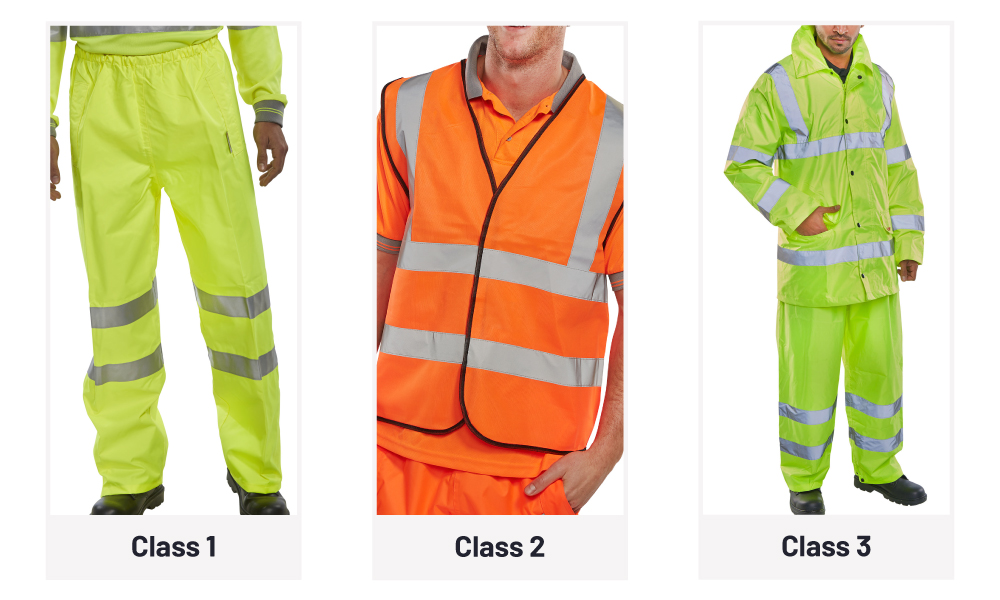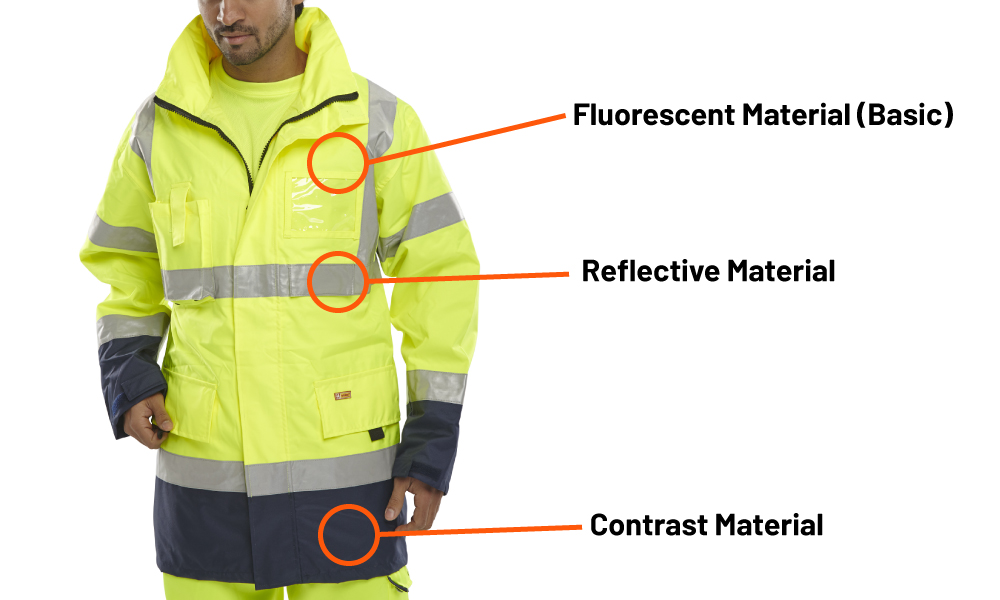EN ISO 20471: Does your hi vis clothing conform?
What is EN ISO 20471?
EN ISO 20471 is an international standard covering the test methods and requirements for high visibility clothing and garments, ensuring that wearers are highly visible in any condition of light, whether during the day or at night by operatives of vehicles or other machinery. The high visibility strips, in particular, must be illuminated when hit by lights in the dark.
The standard encompasses performance levels for the colour of the material and the retro-reflectivity of the strips, in addition to the minimum required coverage and areas of reflective strips.
What is the “ISO” for?
The ISO is an international organisation, through its members creating worldwide standards and classifications for products to ensure they meet certain criteria, in most cases either for safety, the environment and quality management. In certain product categories, like hi vis garments, it warrants worldwide unity from bodies (like the BSI in the UK) to create a standard which can be relied and trusted upon.
EN ISO 20471 “Classes”
Each hi vis garment certified by EN ISO 20471 is assigned a “Class” which represents its effectiveness. “Class 3” is the highest level of safety from a hi vis garment, whilst “Class 2” and “Class 1” garments can be combined to increase the level of safety and achieve a higher class. The class is determined by the area of fluorescent material and reflective strips.

Class 1
The lowest level of visibility which is usually one type of garment only with minimal reflective strips. For example, hi vis trousers.
Class 2
The mid-level of visibility, which generally encompasses garments that cover the torso, with the right amount of reflective material. For example, hi vis waistcoats, hi vis jackets, and more.
Class 3
The top level of visibility, which is achieved by the wearer either by combining multiple garments with varying classes to achieve a Class 3 rating or by wearing a single garment that conforms by itself (for example, a coverall). Combination garment types may include a pair of hi vis trousers, worn together with a hi vis waistcoat.
The below chart shows the minimum visible required are of material for a hi vis garment to achieve each class under EN ISO 20471:
| Material Type | Class 3 | Class 2 | Class 1 |
| Reflective Materials | 0,20 m² | 0,13 m² | 0,10 m² |
| Fluorescent Material (Basic) | 0,80 m² | 0,50 m² | 0,14 m² |
Types of EN ISO 20471 hi vis garment
Wearers need to ensure they are compliant by wearing any, and all of the garment types necessary to be protected and safe in the environment. The garment types and the areas of the body where they should be worn are:
- Torso – waistcoats, t-shirts, polo shirts
- Torso and Arms – long sleeved shirts, jackets
- Legs – trousers, overtrousers
- Torso and Legs – trousers and t-shirt combined
- Torso, Arms and Legs – trousers and long sleeved shirt, coverall
Components of hi vis garments

Hi vis garments conforming to EN ISO 20471 can be separated into three categories;
Fluorescent Material (Basic)
This is defined by the ISO as “Material that emits electromagnetic radiation at visible wavelengths longer than those absorbed”. In a nutshell, if a material is fluorescent, it should be easier to see both in light and in the dark without blending in with any surroundings.
These materials are typically available in orange, yellow or red.
Reflective Material
These are the reflective strips that are a part of any EN ISO 20471 hi vis garment to bounce light back towards it’s source retroactively. For example, the headlights of a car or vehicle, or work lights on a construction site.
Reflectivity can become dull over time, so hi vis garments will need to be replaced for this reason. When the reflective material begins to noticeably become less bright when hit by sources of light, it’s time to get a new hi vis garment! It’s estimated that hi vis garments should be replaced after 6 months to a year, depending on how frequently they are worn and washed (both of which will effect the reflectivity).
Contrast Material
In many hi vis garments, a contrast material is added in areas of the clothing that are particularly susceptible to build up of dirt. The contrast material is a different colour to the fluorescent material. Usually, these contrasting fabrics are darker colours, like navy blue. If a hi vis garment is a purely fluorescent material, the areas that may collect excess dirt are likely to effect the garments visibility and could make in non-compliant.
Common areas of contrast material on a garment may include the shoulders of a jacket, the knees of trousers, and the pockets of many types of garment.


